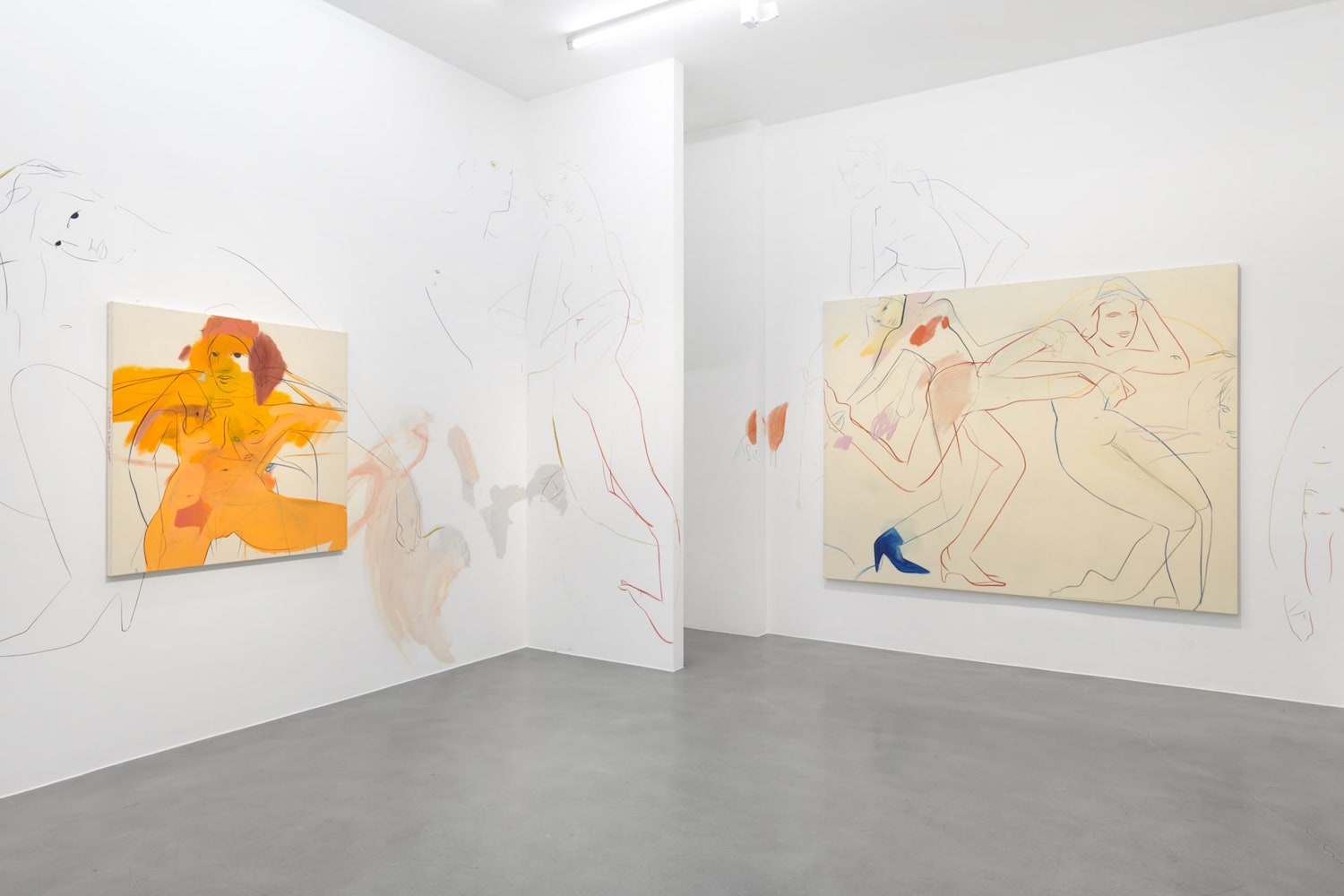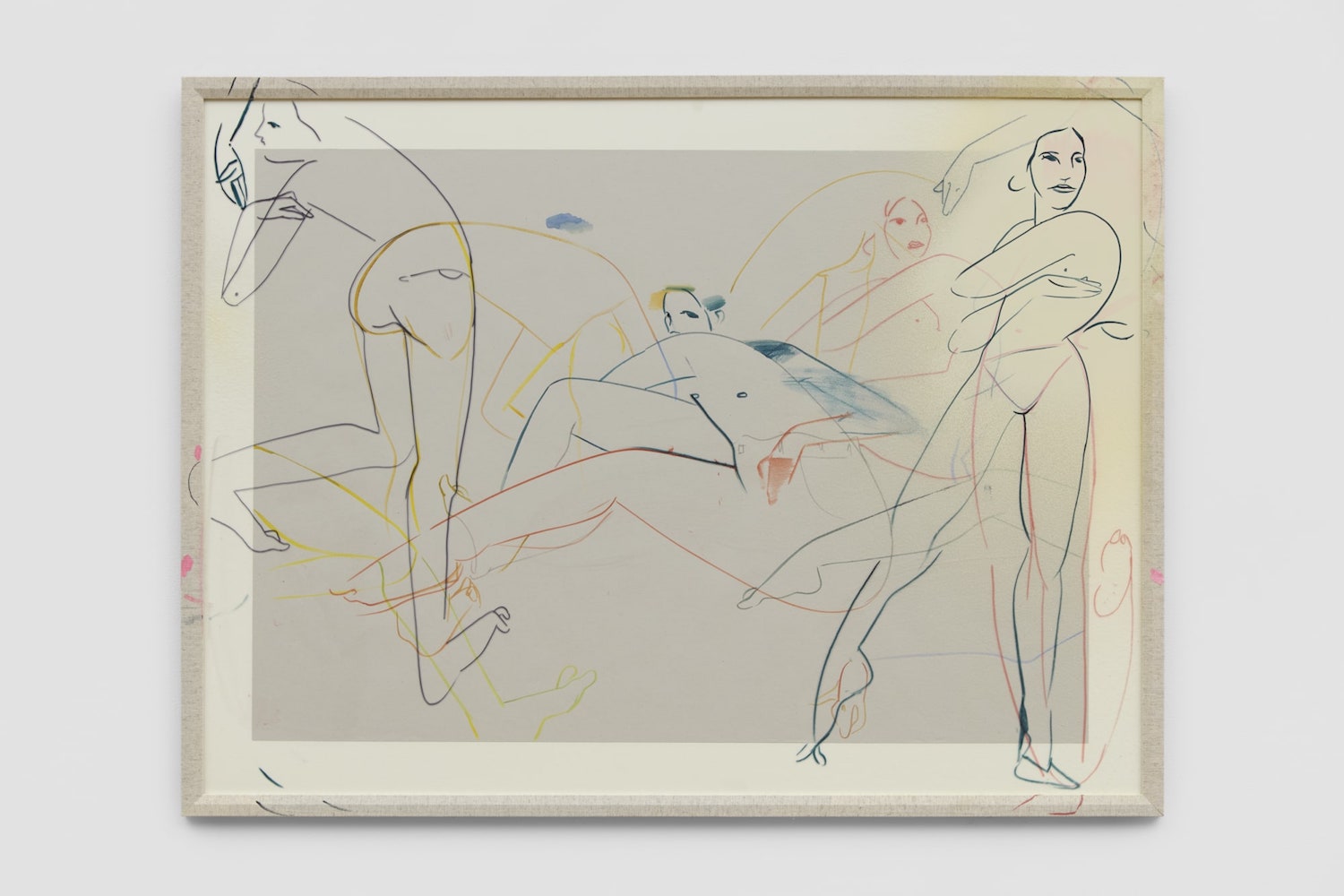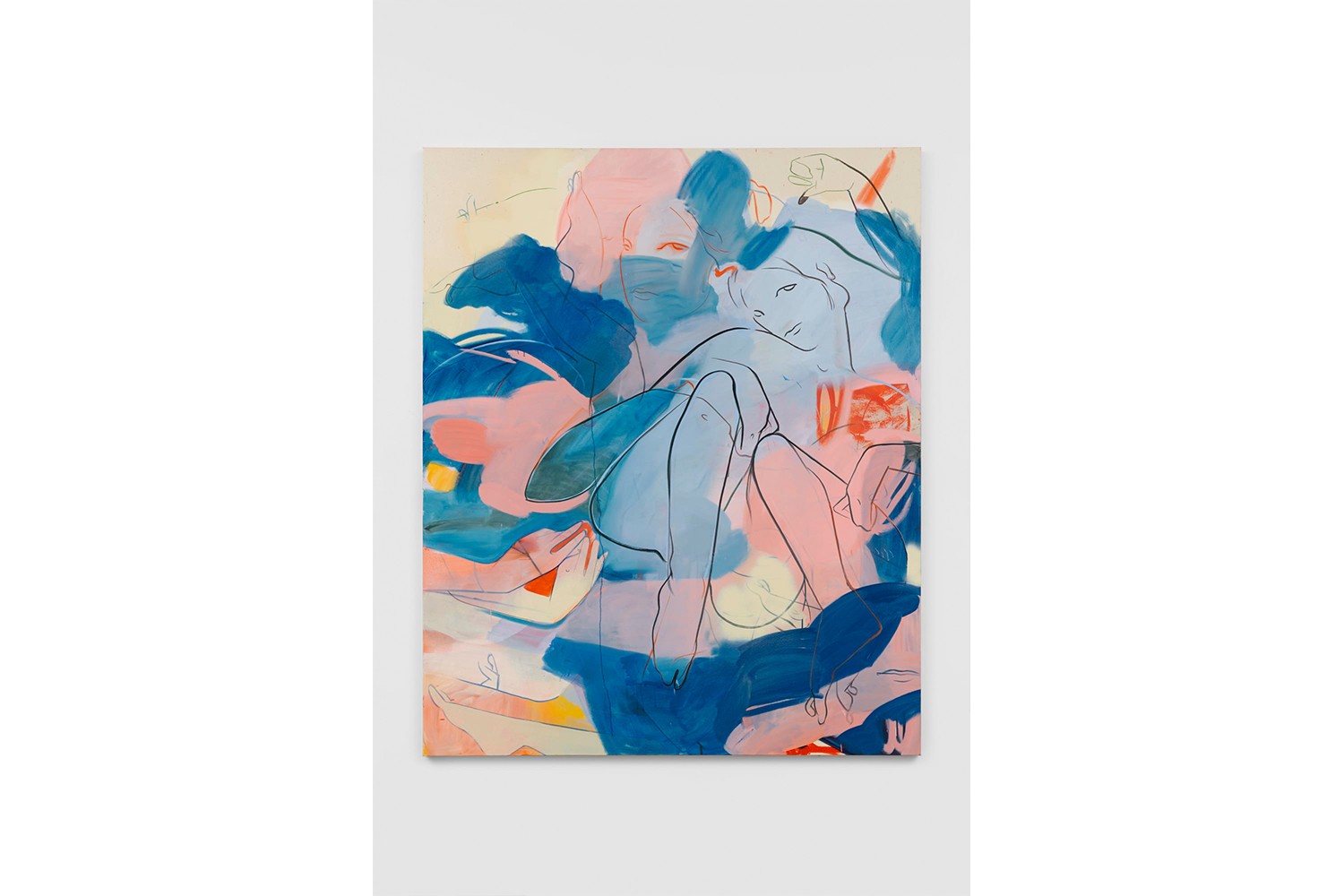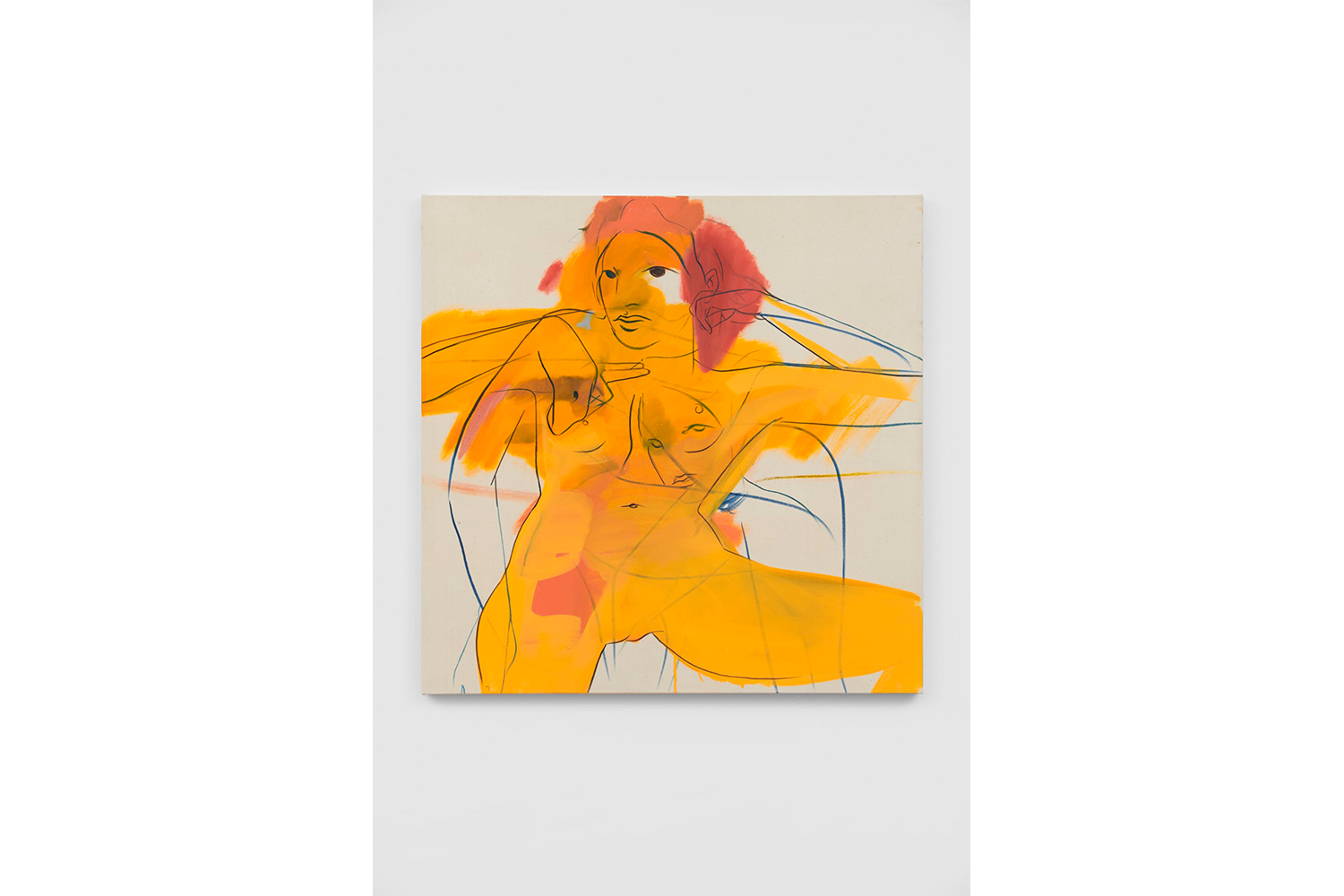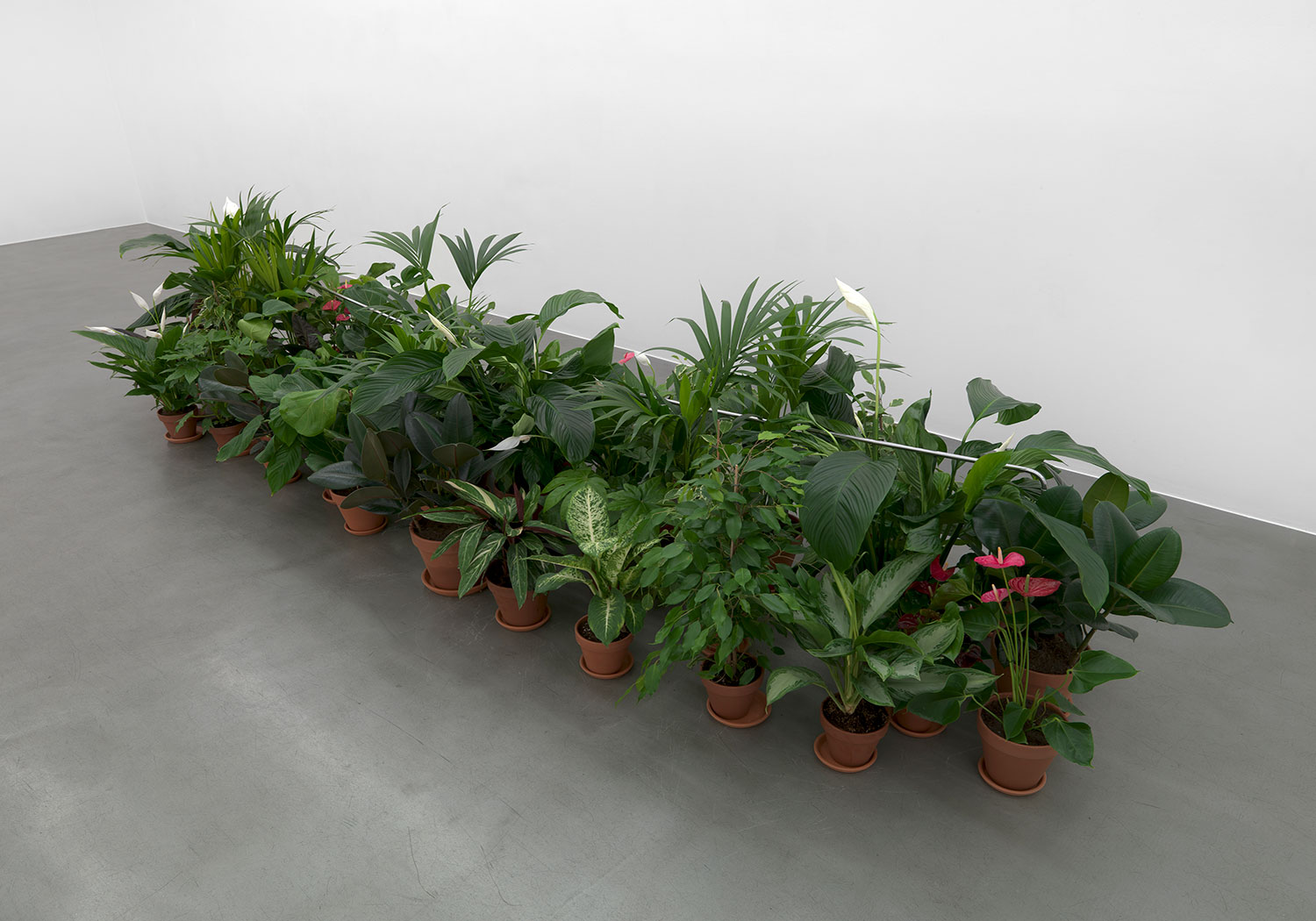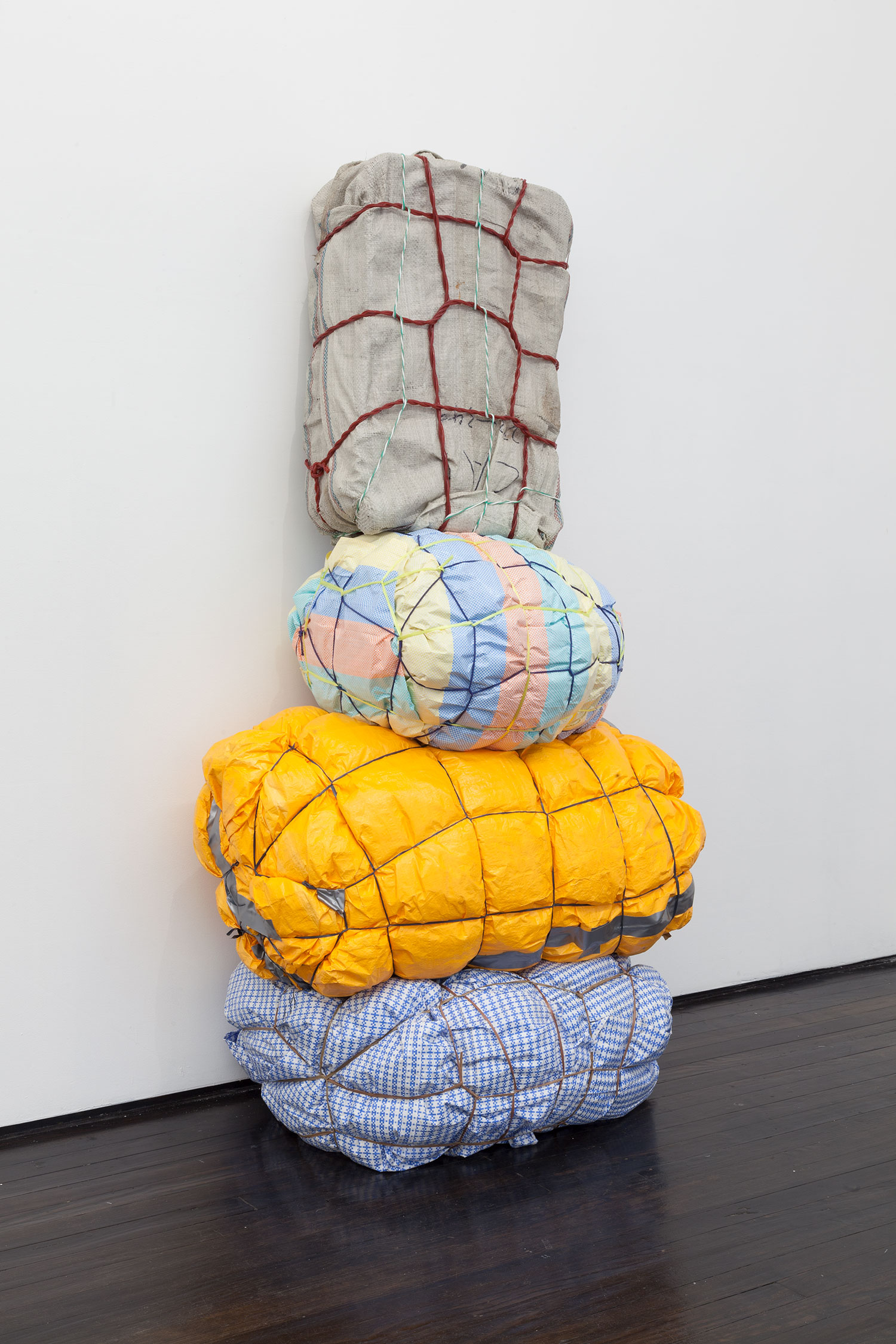The title of France-Lise McGurn’s exhibition, “Percussia,” is a fiction, an invented word designed to create atmosphere and set the tone. Its linguistic proximity to the notion of percussion, of instrumental music, creates the illusion of a pulsating beat: a rhythmic bass line that holds the composition tight, gluing it together, akin to an anonymous crowd of dancing bodies fused in ecstasy for one night only. Bodies, and feeling, and bodies who are feeling it, abound in McGurn’s immersive work.
On the ground floor of the gallery, across nine large paintings, her oversized, cavorting figures are executed in thick marker, oil, acrylic, and spray paint, in a seductive palette that includes teal, ochre, yellow, pink, and red. The wall murals — which extend the frame of these paintings to the seams of the room — are made quickly in situ days before opening, and will be washed away when it closes. McGurn clearly works both impulsively and intuitively. Patches of canvas might be left raw and untreated, while others are flushed with thick washes of color. The loosely brushed corporeal anatomies intersect and seep into one another. On the walls, this creates an optical illusion of shadowy afterimages, as if these fluid bodies are insinuating an awareness of their own ephemerality. They are often unclothed — occasionally embellished with a pair of shoes, red lipstick, a cigarette — yet they somehow avoid being exposed in their potential nudeness. The composition intermittently veers into surreal or dream-like territory: a pair of lips, pirouetting disembodied legs, or a singular, cocked arm can be spotted drifting away toward the ceiling. Even when the bodies are languid, there is a sense of restlessness and a refusal of inertia. Across a series of smaller ink drawings on sugar and brown paper — exhibited in the space downstairs — these lean, athletic limbs and pointed toes continue to push against the hard borders of their fixtures, escaping over the edges, or are even rendered on the protective glass itself.
Despite their openness and assumed familiarity, these are not individual characters but rather ciphers for a state of mind and mood. They are figurative in form but somehow executed through a language of abstraction. Akin to Renaissance frescos, McGurn’s figures are iconographic, symbolic, components of a whole worldview. Through their multifarious guises, they embody a sustained and collective presence, however fleeting their gestures might be.


